
David Millians
Urban: no more than 150,000
Mandarins: about 150
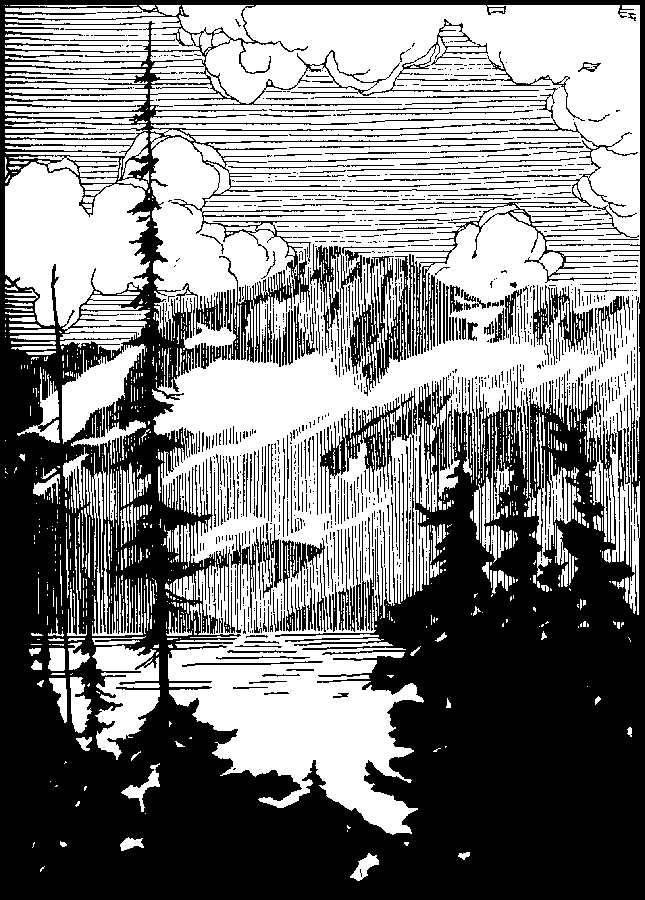 Boshan is a large province in the south of Kralorela, known for its contrariness and diverse ethnic and religious heritage. To the north lies Puchai Province, the Suam Chow is north and east, while the Hachuan Mountains tower to the west and across most of the south of the province, descending into the jungles of Fethlon. Abundant with resources and several important cities, Boshan is also an important area for trade.
Boshan is a large province in the south of Kralorela, known for its contrariness and diverse ethnic and religious heritage. To the north lies Puchai Province, the Suam Chow is north and east, while the Hachuan Mountains tower to the west and across most of the south of the province, descending into the jungles of Fethlon. Abundant with resources and several important cities, Boshan is also an important area for trade.
Geography
Boshan is a vast region, encompassing a range of geographical and physical features. Vast mountain ranges, Hachuan Shan, fill the southwest, while the Hsa Shan stretch away to the north. The Golden River and its tributaries converge in the center of the province and wind across wide, flat country, perfect for rice faming, to the sea. A handful of prominent hills dot this country. Most of the population lives in this region.To the west of the Golden River, the land rises into increasingly sharp hills and minor mountain ranges and stretches into deep, narrow canyons. The highest part of this dissected plateau, Hwa Gow, fills the relatively low gap in the Shan Shan Mountains, beyond which lie the burning plains of the long-dead giants. Hwa Gow is full of towns and tribes whose ways are strange and varied, but this area remains part of the empire.
East of the Golden River rise gentler hills, a fertile landscape of occasional crags and growing patches of ancient forest and jungle. The creatures and peoples are a mix of Kralori and other folk, though all answer to the rule of the Mandarins. This area is famous for its gigantic fruit, some oranges weighing hundreds of taels (100 taels weighs approximately 3.7 Kg/8 pounds). Many kilometers from the Suam Chow, this landscape finally spreads into the Fethlon Jungle with its elf and beast inhabitants.
Most of Boshan is notorious for its hot and humid weather throughout much of the year. Winter brings a slight cooling but also typhoons and thicker mists out of Kahar’s Sea. The hill and plateau country of the west and south of the province, however, is more temperate, and many wealthy families have estates in these regions, where they can escape the heat of the lowlands.
Demographics
Boshan Province is infamous for both its diversity and its truculent nature with regard to the central government. Ethnic and religious variety has a long history in the area now known as Boshan. The causes and course of this assorted cultural array is clear from the region’s history, described below. Their sheer diversity keeps this province colorful and challenging to rule.Three major kingdoms existed in this region, each with a long tradition of its own. The people of the central areas along the Golden River and its branches look back to the Dyan Kingdom and its proud traditions. This makes itself felt in many ways, including both rural practices and ancient noble lineages that still hold power throughout the area and see everyone since Emperor Shavaya as an interloper.
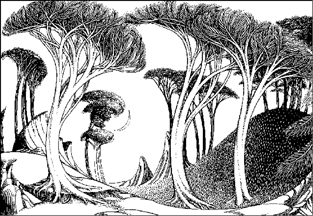 Some parts of the western uplands and the Hwa Gow remember the Eagle Lords of Yu Ah and the peaceful age they ruled, while the ghosts of the long-lost princes of Voon in the southeast sometimes still appear to disturb the peace of Boshan by inspiring old, bloody ways among the peasants.
Some parts of the western uplands and the Hwa Gow remember the Eagle Lords of Yu Ah and the peaceful age they ruled, while the ghosts of the long-lost princes of Voon in the southeast sometimes still appear to disturb the peace of Boshan by inspiring old, bloody ways among the peasants.
Several tribes of semi-civilized mountain folk live along the settled frontier. The largest are the Feng, Kachwin, and Laow. The delicate Feng grow tea in terraced plantations on steep hillsides and are known for their kindness and love of dance. They have much in common with the more remote Meefung Bee People but are contented citizens of the empire. The Kachwin are rough hillfolk farmers, warriors and defenders of their lands and family. They have an unruly and base reputation, much like their pigs, but dutifully pay tribute on time. The Laow are farmers and hunters and worship a great spirit, Lord Cervid Dragonson. Most lowlanders assume that these are Hsunchen folk that have become enlightened by Kralori civilization, but many of them are a mix of Kralori that settled the areas long ago and made peace with the local spirits.
The range of physiognomies in Boshan points to possible Wareran influences, presumably from southern Greatlands long ago. Both Kralori and the aboriginal people deny such speculations. There are, however, some Beast Riders that do inhabit the far west of the Hwa Gow Plateau, and some of them offer intermittent tribute to the Kralori Empire. These include the Khagar, who follow Storm Bull and may have an admixture of Ngau Bull Folk but do not ride beasts; the Lesser Bison Riders, known as the Chwong, who ride small forest bison and settle in villages for years at a time; small groups of Loo Chiao Lizard Riders and Xi Rhino Riders; and even a few bands of Morokanth, regarded as dangerous demons by all lowland folk.
The cultural, legal, and linguistic diversity of Boshan Province keeps the Mandarin’s translators busy.
Hsunchen Beast Peoples
Arguably the most ancient influence in the region is the Hsunchen beast peoples, mostly now confined to the further reaches of the hill country and mountains. Some of these tribes and communities acknowledge the rule of the Kralori, while others live in a restless peace with nearby forces or are simply too remote to bother.The largest communities are those of the Loo Deer People, identified by foreign scholars as kin of the Damali of Ralios; a few of these live under government rule. Kralorela actually hosts several deer peoples, and Boshan also has a few bands of Faiy, pygmies known for their sharp fangs, lowland swamp villages, and barking deer totem.
Sofali Turtle Folk have villages dotting remote stretches of the coast of the Suam Chow. The strange Bat Hsunchen, the pygmy Pujaleg, some of whom roam by day, others by night, live in the jungles of the mountain slopes, while the Meefung Bee People tend their hives and tea groves on the clear slopes. Boar (Ga) and Bull (Ngau) Folk have a few small villages. Qa-ying Eagle People and Lofak Yak People dwell high in the mountains. Everyone knows that lone Mio (Cat), Hok (Crane), Wu (Fox), Yo (mongoose), and Hsa (Tiger) wander at the edges of civilization and on quiet rural pathways, usually up to no good. Viper Folk, allies of the evil Huan To, are rumored in every dark valley. Both the Geet Chicken Folk and the Tsao, who once served the Jungle Hen Spirit, are said to be extinct, but the ghosts of what may be these ancient warriors have been seen on more than one occasion.
History
The oldest tales of the region are in large part similar to those told throughout Kralorela, though the emphases and lessons can be different. The first several emperors have far more forest and beast imagery, perhaps a carryover from the area’s strong Hsunchen roots. Their dragon nature gets little attention, and Emperor Shavaya received their greatest respect, for he is considered the founder of many traditions and lineages. Emperor Daruda and succeeding Kralori emperors are described as little more than heavy-handed, even while the people of Boshan have gradually accepted the same draconic ways as the rest of the empire.
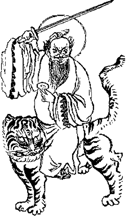 The oldest records of the province speak of the Kingdom of Dyan, whose kings claimed descent from Emperor Shavaya. They were famed for their elaborate, beautiful bronze work, lacquerware, and silk embroidery. Based in high hilltop fortresses and around the rivers of central Boshan for transportation, the kingdom grew rich and influential. Their gods and spirits were forms of serpents and tigers, and their script was a variation of ancient Kralori forms with elaborate floral and animal motifs. Many modern scholars see Hsunchen and possibly Aldryami influences.
The oldest records of the province speak of the Kingdom of Dyan, whose kings claimed descent from Emperor Shavaya. They were famed for their elaborate, beautiful bronze work, lacquerware, and silk embroidery. Based in high hilltop fortresses and around the rivers of central Boshan for transportation, the kingdom grew rich and influential. Their gods and spirits were forms of serpents and tigers, and their script was a variation of ancient Kralori forms with elaborate floral and animal motifs. Many modern scholars see Hsunchen and possibly Aldryami influences.
They buried their dead in vertical pit graves and their leaders in great mounds, most of which were plundered of their relics long ago, but many hills, some quite large, in Boshan are rumored to be the last resting places of Dyan kings. Old carvings show the Dyan wearing their hair in elaborate topknots, indicating roles and ranks, and many people in Boshan still arrange their hair in some of the same forms.
Modern historians view the Dyan as a decadent kingdom, lewd and shamanistic. This is symbolized by their dedication to bullfighting, music, and strange foods, all of which remain popular in Boshan. Ever rebellious, the kings of Dyan defied and resisted the center for many ages, fighting among themselves as much as against the civilization and armies of the Kralori.
A reformist king, Lord Gok, appointed a wise prime minister, probably a learned Kralori man, but while he made many changes, he was killed at king’s funeral and the reforms reversed. A later reformist king appointed another sensible prime minister, but other nobles threatened his life, and he fled the court and drowned in the Golden River. People in Boshan still claim this as the origin of the Dragonboat Races, though all other Kralori view this as nonsense. The arrogant last king of Dyan, Lord Ao-pan, died in the earthquakes and rebellions that shook the foundations of his great fortress and the support of his people.
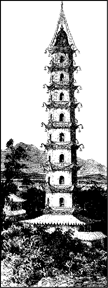 Similar upheavals left little clear information about the two other polities of early Boshan. The “Eagle People” ruled the Kingdom of Yu Ah in western Boshan from their “nests in the sky, mountains, and tallest trees,” according to local tradition, but while the Eagle Lords figure in a number of folk tales, their ways are mostly forgotten.
Similar upheavals left little clear information about the two other polities of early Boshan. The “Eagle People” ruled the Kingdom of Yu Ah in western Boshan from their “nests in the sky, mountains, and tallest trees,” according to local tradition, but while the Eagle Lords figure in a number of folk tales, their ways are mostly forgotten.
Voon in southeastern Boshan was a culture of valley principalities, ruled by immortal elves, perhaps dryads. Their ways involved tribute paid to the fields and forests in horrid, bloody rites. Voon and Yu Ah vanish from historical records during the many incursions of Sekever.
During these distant ages, the fire faiths of Teshnos arrived from the south, though their modern priests claim they have always existed in the area. They do not accept all of the teachings of Chal and show many significant divergences from the practices in Teshnos. A minority faith, the flame temples continue to flourish throughout the province.
A hero of the Kralori, Huang Is, finally tamed and integrated the people of the region as best as they ever would be. Inspired by the emperor, he came to the banks of the Golden River with all of the riches of Kralori civilization. Foolish and unimpressed by real culture, the local people ignored him or tried to rob Huang Is of his noble gifts.
Huang Is perceived their nature and announced a grand feast, incorporating all of the bizarre, dangerous, and disgusting ingredients eaten by the natives. Every kingdom and tribe sent their leaders and many others to enjoy this banquet. Huang Is brewed a fabulous meal in a great cauldron, some say a relic of Dyan, and when the chiefs, princes, kings, and magicians of the land drew around it, he overturned it upon them, cooking away their most base natures. When he lifted the cauldron, they were freed and eagerly joined the Dragon Way. The outline of the cauldron rim marked out the imperial walls of Sha Ming, ever after the center of Boshan. They hold a great festival of food every year to commemorate this event and all of the lessons learned, though some lessons may not be the ones intended.
As the taste of any stew varies, Boshan remained diverse and sometimes intractable. During the reign of Emperor Vayobi the Tcheng Twins, two sisters, led a rebellion against the central government. Though their uprising suffered defeat and they were deemed servants of Sekever, local people still remember these heroines fondly, and they serve as inspiration for a secret society of women warriors in the region. Their story does nothing to curb the rebellious nature of the people of Boshan.
A tribe or district will sometimes seethe with defiance, but these scattered acts of insubordination are quickly scattered or crushed. More serious are the uprisings led by ambitious noble families, claiming some ancient heritage, allying with Hsunchen, monks, and even Huan To. Sometimes a Mandarin or even a governor falls prey to the delusion of reviving independence for Boshan. These events require more significant application of military, magical, and draconic force.
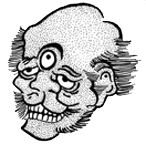 During the reign of ShangHsa May-His-Name-Be-Cursed, the region of Boshan was split between multiple provinces, and the area was active with resistance groups and righteous warriors. Emperor Godunya recognized this service when he took the throne, though that has not prevented the War Dragons from descending on rebellious Sha Ming on several occasions.
During the reign of ShangHsa May-His-Name-Be-Cursed, the region of Boshan was split between multiple provinces, and the area was active with resistance groups and righteous warriors. Emperor Godunya recognized this service when he took the throne, though that has not prevented the War Dragons from descending on rebellious Sha Ming on several occasions.
As a frontier region and an area of Sekeveran activity and interest from before the reign of Emperor Vayobi, secret societies, evil cults, and the Yellow Turbans remain dangerously active in the province into the modern era.
Districts
Boshan is composed of eleven districts, each led by a senior Mandarin and his staff. Within these are varying numbers of subordinate districts, encompassing smaller cities or collections of towns and villages. A few hinter sub-districts are quite large and may have only a few settled communities, the rest of the area being the haunt of barbarous tribes and monsters. Needless to say, these are hardship assignments for Mandarins.
Ah Kwa
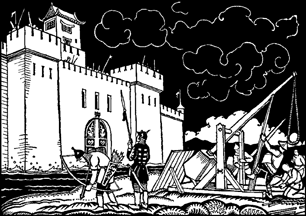 Ah Kwa encompasses the deep valley of the Wrath River and the surrounding plateau and uplands in western Boshan. There are two main cities in the district, Ah and Bow Xing, both near the river. The Wrath River itself is cluttered with massive boulders and rapids and has long, beautiful stretches, but it is a poor medium for long distance transportation. Flat and terrace rice paddies fill the river bottomlands, while farmers of millet and sorghum and herdsmen use the higher country. The region is famous for its cormorant fisherman. The water buffalo is the primary beast of burden, and the most common livestock are bees, ducks, elephants, pigs, and sheep. Moving into the high country, Kralori villages thin out into the lands of Feng and Kachwin tribes, then various scattered Hsunchen and the Ha Shan Mountains.
Ah Kwa encompasses the deep valley of the Wrath River and the surrounding plateau and uplands in western Boshan. There are two main cities in the district, Ah and Bow Xing, both near the river. The Wrath River itself is cluttered with massive boulders and rapids and has long, beautiful stretches, but it is a poor medium for long distance transportation. Flat and terrace rice paddies fill the river bottomlands, while farmers of millet and sorghum and herdsmen use the higher country. The region is famous for its cormorant fisherman. The water buffalo is the primary beast of burden, and the most common livestock are bees, ducks, elephants, pigs, and sheep. Moving into the high country, Kralori villages thin out into the lands of Feng and Kachwin tribes, then various scattered Hsunchen and the Ha Shan Mountains.Several areas of the district have mining activity, and there is a significant community of rural Keets near Ah. Several ruined Eagle Lord fortresses sit atop towering hills along the river.
An Kwan Dai
An Kwan Dai District centers on the small city of the same name on the southeastern coast of Boshan. The city was much larger during the reign of ShangHsa May-His-Name-Be-Cursed and the site of several major God Learner universities. These areas now lie shattered by the dragons’ judgment and overgrown by the centuries. A few fools and madmen still pursue fragments of these broken studies, but the modern city faces the sea, and its people engage in fishing and trade. There is a major fortress nearby, where the War Dragon keeps watch on the Fanzai Straits to the south.The surrounding district is densely settled with rice farmers. Other Kralori consider them lazy fools. Many strange folk, Keets, Hsunchen, and Aldryami live in the marshes, jungles, and other wild areas of the region.
Ban Jau
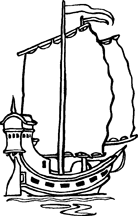 Ban Jau is a large peninsula stretching into the Suam Chow northeast of Sha Ming. It has no major cities, and the seat of the Mandarin of the district is at the modest town of Daai Saan (Big Fishing Basket), on the east side of the peninsula. Sam Jan is a busy new port created by Godunya near the tip of the peninsula, just west of the western end of the Bridge of Liver, Bile, and Honey. The coastal areas have many coves and inlets, full of fishing villages and government salt works. Boat races and the Cult of the Golden Fish Dragon are popular.
Ban Jau is a large peninsula stretching into the Suam Chow northeast of Sha Ming. It has no major cities, and the seat of the Mandarin of the district is at the modest town of Daai Saan (Big Fishing Basket), on the east side of the peninsula. Sam Jan is a busy new port created by Godunya near the tip of the peninsula, just west of the western end of the Bridge of Liver, Bile, and Honey. The coastal areas have many coves and inlets, full of fishing villages and government salt works. Boat races and the Cult of the Golden Fish Dragon are popular.The interior of the district is much more rugged than the rest of the coast of Boshan and spreads from a small mountain range running down its middle. This area has many settlements and farms and is also home to many Kachwin and Laow clans and small numbers of Hsunchen folk. The hills also contain many reclusive temples and hermitages, some famous for their holiness and martial arts traditions. Among the latter are Black Bell Temple and Resting Leopard Temple.
Bok Tong Goon
This district lies in the far southeast of the province at the edge of the Fethlon Jungles. Its farmland is sufficient but poor, and its main wealth comes from lumber and rare herbs gathered from the forest. The old noble families of the district have ancient pacts with the Aldryami to allow this exploitation of the jungle’s wealth, but they have been overly greedy in the past, and this has led to conflict and the involvement of the War Dragon.Deep in the jungles of the extreme south of the district lie the ruins of Shi Mai, a city of the False Dragon Ring. Humbled in the Dragon’s Awakening Shudder and avoided by all righteous Kralori, its remains are overgrown, and just a few towers still poke above the mighty trees. Many treasures and strange magic from that age may still lie within it, but it is haunted by numberless hungry ghosts and demons.
Choong Tak
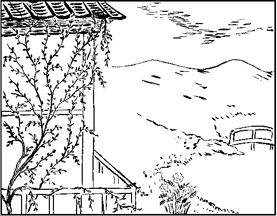 This rich, wealthy district south of Sha Ming produces abundant rice and other foodstuffs, and its ancient wealthy families are famous for their scholarly ways and sponsorship of artists, making it also a region of great beauty endowed with many pleasant estates and lovely gardens. This area suffered greatly during the depredations of ArgatuSay’s followers, but it is restored since the victories of Imolo Wen, and his family now owns much of the land in the region and many of the best estates. Their new titles are not always appreciated by the older families, and this district is prone to intrigue beneath its beautiful exterior.
This rich, wealthy district south of Sha Ming produces abundant rice and other foodstuffs, and its ancient wealthy families are famous for their scholarly ways and sponsorship of artists, making it also a region of great beauty endowed with many pleasant estates and lovely gardens. This area suffered greatly during the depredations of ArgatuSay’s followers, but it is restored since the victories of Imolo Wen, and his family now owns much of the land in the region and many of the best estates. Their new titles are not always appreciated by the older families, and this district is prone to intrigue beneath its beautiful exterior.Three small cities are the focus of the district. Kok Ke Hoo lies near the center of the region and is the seat of the district’s senior magistrate. It is famous for its fine lacquerware, paper umbrellas, and horn combs. The locals claim that all three were invented in their town.
Naam Chyoh in the south is best known for its hot springs, where wealthy visitors take the water and sip the area’s well-known golden tea. In addition to these blessings, the town draws its real wealth from its endless groves of almond trees.
Saan Saan is just north of Kok Ke Hoo. Its ancient kilns produce a much sought after porcelain. It also has a long history of martial arts masters, and is home to more than a dozen major schools and dojos.
Hwa Gow
The Hwa Gow Plateau rises high in the west above the lowlands of Boshan and forms a high, wide pass through the Shan Shan Mountains. While administered by a few lonely Mandarins and settled by a few Kralori, the rugged landscape is the home to a variety of peoples, including tribes of Kachwin, Khagar, Laow, beast riders, and Hsunchen, including Ga, Loo, Ngau, Pujaleg, and others. These create a fractious, frontier culture with more than its share of the bizarre and violent, but all in all Kralori officials keep the peace, and the plateau acts as a buffer against beast rider raiders.Hwa Gow is littered with strange topographic features like One Hundred Pits, Lizard Dragon Caverns, and Moon Hill. There are also several ruins, many of which predate Kralori activity in the area. A few orders of monks have sought out the seclusion of these lands and built remote temples.
Jing Kong
Jing Kong encompasses the tributaries of the upper Golden River, extending deep into the mountain valleys of the Hachuan Shan. Mining interests – gold, silver, bronze, copper, lead, zinc, tin, obsidian, quartz, fine stone like marble, several kinds of semi-precious stone, even jade - are strong here, and while the seat of the district is the small city of Yat Gam, guilds and wealthy families dominate the region, and corruption and smuggling are a problem.
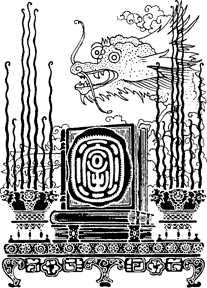 The dwindling remains of many tribes still live on their ancient lands, but all experience cultural pressure, bad bargains, and violence from the numerous mining interests, which dig their territory. These mountain folk include Feng, Kachwin, and Laow villagers, Ga Boar Folk, Loo Deer People, Ngau Bull Folk, and both types of Pujaleg Bat Hsunchen. The land is strong with beast and earth spirits.
The dwindling remains of many tribes still live on their ancient lands, but all experience cultural pressure, bad bargains, and violence from the numerous mining interests, which dig their territory. These mountain folk include Feng, Kachwin, and Laow villagers, Ga Boar Folk, Loo Deer People, Ngau Bull Folk, and both types of Pujaleg Bat Hsunchen. The land is strong with beast and earth spirits.
Sha Ming
The great, ancient Kralori metropolis of Sha Ming lies on the north bank of the estuary of the Golden River and dominates trade and society in southern Kralorela. Though known for its intermittently rebellious nature, the city is also the center of government and the military. Locally, Sha Ming is best known for its many temples, monasteries, and beautiful gardens in the Lake District.Sha Ming was a major center for the False Dragon Ring and the empire of ShangHsa May-His-Name-Be-Cursed, and God Leaner influences remain in the city. These include some temples and traditions, as well as secret societies. Few modern Kralori remember the origin of these institutions.
Guilds and wealthy merchant clans, especially those engaged in the mineral trades, are stronger in Sha Ming than in other Kralori cities. The city never fell to the rebel allies of ArgatuSay, but when Imolo Wen came to the land and defeated the emperor’s enemies, his family gained huge grants, and while the master remains mostly with his studies within his dojo, his now distant relatives dominate local wealth and culture.
Only one other significant city, Toh Tow, lies in this district, and it is dwarfed by its larger neighbor. It lies on the west side of the wide bay formed by the estuary of the Golden River. Its people are famous for their consumption of tea. Their city is under the protection of a sea goddess and her eel-like son.
Sya Sau
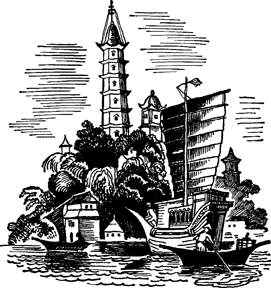 Sya Sau comprises the northeast of Boshan Province, where the coast curves west into the Suam Chow. The town of Sya Sau guards the sea, facing east, and is the center of the province’s official salt extraction and trade. South along the coast is the smaller city of Hsiang Fung, also an important salt center and based on an ancient fortress. Inland are countless rice paddies and canals. The largest routes stretch all the way to Sha Ming.
Sya Sau comprises the northeast of Boshan Province, where the coast curves west into the Suam Chow. The town of Sya Sau guards the sea, facing east, and is the center of the province’s official salt extraction and trade. South along the coast is the smaller city of Hsiang Fung, also an important salt center and based on an ancient fortress. Inland are countless rice paddies and canals. The largest routes stretch all the way to Sha Ming.The ruins of Taap lie partially submerged along almost a mile off the north coast, its towers and spires battered by even the gentle waves of the Suam Chow. Ghosts, monsters, and sea demons haunt it, but this does not keep the local people from diving there for both lost treasure and the fine pearls that grow in its ancient boulevards. Historians differ as to when the city fell.
Tung Shui An
The large city of Tung Shui An and its surrounding district lie in the north of Boshan, where it meets Puchai Province at White River, just below Descending Cloud Falls. A powerful, hungry demon once dominated the city, driving its inhabitants to never eat with anyone outside their families for fear of poison. Bok Chan, a hero of Emperor Godunya, defeated the demon, and now no citizen of Tung Shui An ever eats at home. The city still has many walls and wards, more than most other Kralori cities, but its people always circulate, seeking the best meals.Near Ting Shui An is the Pool of Resurrection, a sacred place that some say dates back to the time of Heenmaroun. Ghosts roam its waters and rise to speak to mortals. People come from all over the empire to visit the large monastery that now surrounds it, some seeking prophecy, others hoping to speak to their lost loved ones. The monks run a large hostel, sell special charms, and grow rich.
Xia Gu
Xia Gu lies west of Sha Ming and south of Ting Shui An, where the Boshan lowlands rise into the labyrinthine canyons below the Hwa Gow Plateau. Scattered Kralori communities farm and herd, but transportation is difficult, and mostly small tribes of barbarians and Hsunchen dwell here, though under the leadership of officials in the small town of Tiwan Bin and the nearby, growing outpost of Shoon. The district is little known, and many lost things hide in its winding terrain.
Politics & Nobles
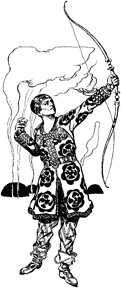 Boshan Province is one the empire wealthiest and most important regions in spite of its truculent, sometimes barbarous nature. Exarch Goh Jinhong governs the province from his seat at Sha Ming, while a few thousand government employees, led by just over one hundred Mandarins, maintain harmony and regularity in the city wards and rural districts. General Jang Bwadoong commands the Green Dragon of Effulgent Victory, which is based in the province.
Boshan Province is one the empire wealthiest and most important regions in spite of its truculent, sometimes barbarous nature. Exarch Goh Jinhong governs the province from his seat at Sha Ming, while a few thousand government employees, led by just over one hundred Mandarins, maintain harmony and regularity in the city wards and rural districts. General Jang Bwadoong commands the Green Dragon of Effulgent Victory, which is based in the province.Clannishness is, if anything, stronger in Boshan than elsewhere, which results in powerful clan patriarchs and village headman. The unusual and varied inhabitants of the province’s fringes are mostly left to their own devices, so long as they pay tribute to the emperor.
Boshan Province’s diversity creates a complex, layered system of power, but as everywhere in the empire, a few prominent, scholarly, wealthy Kralori clans dominate the region. The youngest and smallest of these is also the most powerful, the Wen family, formed from various collateral lines of the clan of Imolo Wen. Following and assisting the great general, his righteous kinfolk received grants from both him and the emperor for their meritorious deeds. Their children and grandchildren now own some of the best land in the province and dominate several of its prominent institutions. Squabbling with one another over old claims and envied by the older families of the region, it is not clear if any of the now powerful Wen clans will long continue their prominence.
Three other much older clans hold much power and wealth in the region, and while the Baak, Byo, Dyan, and Yat have old feuds, they also have intermarried and reached accords over the years that make them much more stable than the Wen. The Baak claim descent from the hero Bright Spear and resent in particular the Wen dominance of the ancient city of Sha Ming. The Byo are the richest clan in the province and have extensive lands around Sha Ming and in Choong Tak District. The patriarch Byo Yitsin has a penchant for poison and keeps two tame tigers. The Dyan Clan, led by Dyan Lo-pan, boast the blood of the land’s ancient kings, have many mining investments, and shelter numerous secret societies. The Yat are the most involved in the province’s mines and guilds, seen as demeaning by other clans, and may also engage in smuggling.
A score or more minor clans also jostle for wealth and traditional perquisites in the province. Their shifting coalitions and alliances with the great clans make the governor’s duties ever complex.
- The Chaak are famed as scholars.
- The Cheem are rumored to maintain the province’s largest band of assassins.
- Kway clansmen often join the military.
- The Laan are followers of the fire gods and sponsor several temples and monasteries.
- The Lyoon have a diabolical reputation as demon worshippers and may descend from God Learner founders.
- The Yaw run a private bank and are renowned as clever accountants.
Economy
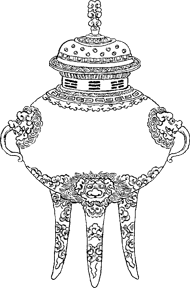 Boshan Province is blessed with rich land and valuable mineral and timber resources, but it is also famed for its embroidery, fine tea, jewelry, metalworking, silk weaving, and woodworking.
Boshan Province is blessed with rich land and valuable mineral and timber resources, but it is also famed for its embroidery, fine tea, jewelry, metalworking, silk weaving, and woodworking.The region produces far more rice than it requires to feed its inhabitants, and the excess is traded to other parts of the empire, especially the capital Chi Ting. The value of rice on the market has occasionally led to economically-induced famines, where the fields produce, but the rice is taken by the taxman and merchant clans for sale elsewhere.
Silk is produced and woven throughout the province, though the greatest concentration is around Sha Ming. Fine tea, on the other hand, comes from both large clan plantations and from smallholdings in the more mountainous districts. In fact, the best teas come from the most remote areas. Sandalwood and other fine timber come from the jungle fringes of the province.
A number of specialty products are also grown. These include bananas, coconuts, dragon fruit, longan, lychee, mangoes, peaches, and various citrus, melons, and nuts. Hemp and other fibers are grown for sale. Salt and pearls are products of the coastline.
Even more lucrative than agricultural products, however, is mining, concentrated in Jing Kong but occurring in all areas other than the flat lowlands along the Suam Chow. The work is primarily underground and usually conducted by slaves and convicts. Hsunchen captives provided slaves in the past, but most have moved away from mining areas, and the government tends to discourage their capture in order to reduce conflict in this diverse province.





